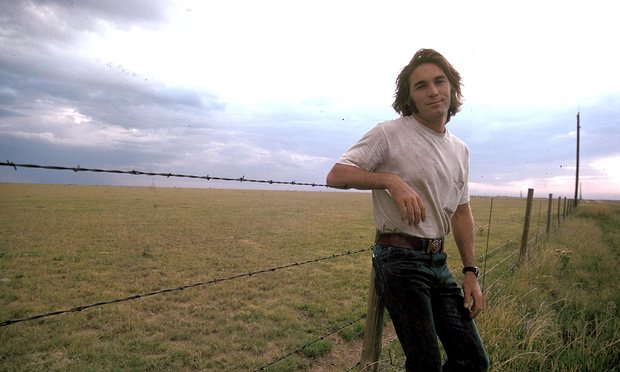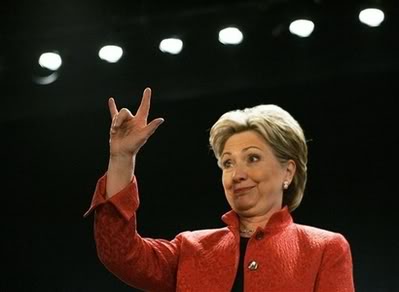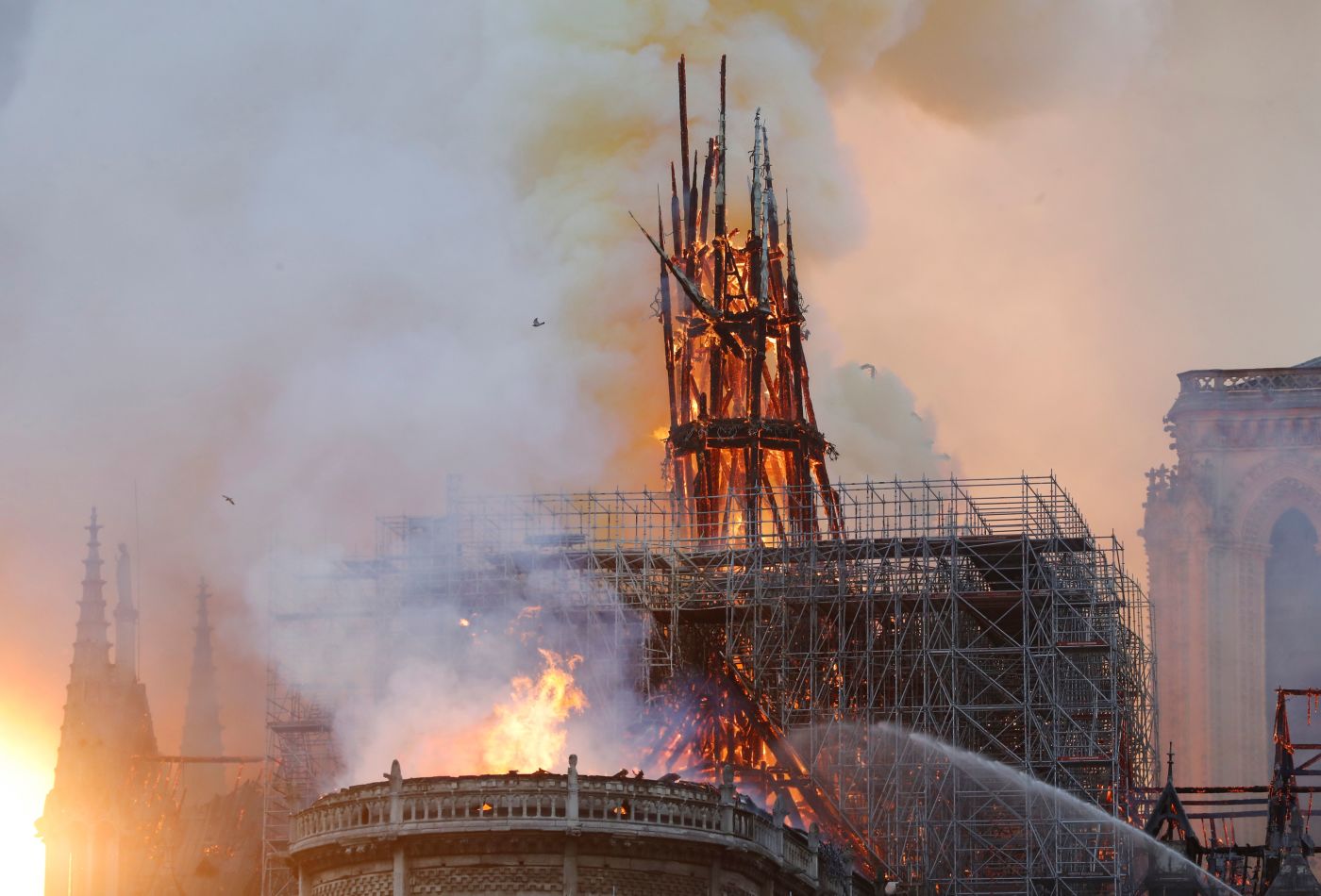The Second Summer of Charles Manson: Why the Cult Murders Still Grip Us
08/17/2016 / By prophecynews

Charles Manson made many grand predictions in the 60s to his doped-up, damaged followers about his future, but he never foresaw that he would waste away pathetically, a broken old man in prison. Rather, he said he would be a rock star – “bigger than the Beatles”, he promised. Failing that, or perhaps as well as that, he would be the triumphant Aryan leader in a global race revolution. But what he really wanted, more than anything, was to be famous. In that pursuit, if nothing else, he wholly succeeded.
(Article by Hadley Freeman)
It is 47 years this month since Manson and his mostly female followers, known as the Family, committed the killings that have become as much a part of the story of 20th-century America as the assassination of JFK and the OJ Simpson trial. However, unlike those crimes, there are no questions about what happened with the Manson murders: we know pretty much exactly who did what to whom, when and why, down to some of the victims’ last words.
Late on 9 August 1969, under Manson’s instruction, four Family members – Tex Watson, Susan Atkins, Linda Kasabian and Patricia Krenwinkel – left their commune on Spahn Ranch, which had been used frequently in westerns, and drove to 10050 Cielo Drive, a house formerly rented by record producer Terry Melcher, but then inhabited by Roman Polanski and his wife, Sharon Tate. Manson had been introduced to Melcher by Dennis Wilson, a dopey, druggy Beach Boy who wrongly thought Manson “had something”. “Charlie’s real cosmic, man. He’s deep. He listens to Beatles records and gets messages from them about what to do next,” Wilson told friends.

Family members Susan Atkins, Patricia Krenwinkel and Leslie Van Houten were convicted for the Tate-LaBianca murders. Photograph: AP
Melcher was less impressed and declined to give Manson a record deal. It is often said wrongly that Manson sent his followers to Cielo Drive to kill Melcher in revenge, but in fact he had been told the producer had since moved out. He did, however, want to give him “a scare”. So, at Melcher’s former house, Manson’s followers slaughtered five people: 18-year-old Steven Parent; coffee heiress Abigail Folger; her boyfriend Wojciech Frykowski; celebrity hairdresser Jay Sebring; and Tate, who was eight and a half months pregnant and died begging for the life of her baby. “Look, bitch, I don’t care about you,” said Atkins. Tate was stabbed 16 times. Her baby son died inside her 20 minutes later.
The following night, the same four killers, plus Manson and Family members Leslie Van Houten and Clem Grogan, drove to 3301 Waverly Drive and killed retail executives Leno and Rosemary LaBianca. They were probably chosen because the Family previously had been to a party at the house next door. At both murder scenes, the Family scrawled words and symbols on the walls, which Manson hoped would lead the police to thinkthe Black Panthers committed the killings, thus starting a race riot. They also wrote lyrics from the Beatles’ White Album, which Manson believed was a coded message to him to start a racial uprising. Sandwiching these murders were many others, some definitely committed by Manson and the Family, some only possibly – of drug dealers, hangers-on and unfortunate innocents, including Manson’s uncle and Van Houten’s lawyer.
Yet, despite the lack of any meaty mystery, the bones of the Manson story are still being picked over. While the killers are rotting or have rotted in US prisons (Atkins died in 2009; Van Houten was rejected for parole for the 20th time last month), the summer of 2016 has become the season of Manson. Emma Cline’s The Girls, a fictionalised account of a 14-year-old girl who becomes a peripheral member of the Family, is the book of the moment. Cline, who was only 27 when the book was published, received a $2m (£1.5m) advance, one of the highest ever for a debut novel. While that’s largely a testimony to Cline’s breathtaking talent, the attention-grabbing Manson peg will not have hurt.
The second series of the NBC series Aquarius, starring David Duchovny as a cop hired to track down a teenage runaway in 1967 who is hanging out with, yes, Charles Manson, kicked off in June in the US. Finally, Alison Umminger’s newly released novel, American Girls, is about a modern-day teenager who becomes fascinated with the women in Manson’s Family.
All of this follows last year’s brilliant 12-episode series on Manson on Karina Longworth’s excellent podcast You Must Remember This, which Vanity Fair called “the summer’s best drama”. By the end of the series, the podcast’s listenership had doubled. “Many of the stories on my podcast have to do with how people change when they become famous, or when fame slips through their fingers,” Longworth says. “I was fascinated by the idea that this era-defining tragedy happened at least in part because this guy got so close to becoming famous, but just couldn’t get there.”
Manson references are never far from pop culture. Mad Men heightened the tension around Megan Draper by styling her to resemble Tate. Leicester band Kasabian, in a characteristically cack-handed grasp for cool, named themselves after Linda Kasabian. Brian Warner chose Manson as the emblem of the US’s dark side – and Marilyn Monroe of its goodness – when he settled on Marilyn Manson as his stage name. Given the violence of the murders, that the killers were largely women in thrall to a male cult leader, and that one of the victims was a beautiful celebrity, it is no surprise that the crimes still hold a fascination for so many people. The question is why they have proved so especially fascinating now.
Since the day Tate and her friends’ bodies were discovered, people have searched for meaning in the Manson murders, bleaching out the bloodiness of the crimes with clinical symbolism and neat narrative. This is often justified by reference to Joan Didion’s famous quote at the beginning of The White Album, her essay about the late 60s, which touches on Manson: “We tell ourselves stories in order to live.” In fact, Didion’s point was that no meaning could be found in that chaotic era. “So many encounters in those years were devoid of any logic, save that of the dreamwork,” she writes.

Manson himself was famously adept at shape-shifting, altering himself to suit his audience. He could be the hip rocker with Wilson and Melcher, the Christ-like guru with his followers, the racist redneck with the bikers who came to the ranch. Similarly, his crimes can be cut to fit almost anyone’s cloth. The story can be one of Hollywood’s transition to the late 20th century, embodied by Terry Melcher, the son of Doris Day (old Hollywood), but friends with the Laurel Canyon crowd (new Hollywood). Or it can be a morality tale about the toxic desire for fame, symbolised by Manson even taking up residence on an old movie lot.
The most common cliche is that the killings marked “the end of the 60s”, when in fact Woodstock, arguably the crowning moment of the decade, happened afterwards, and Altamont, the definitive end of the rock’n’roll hippie dream, was also yet to come. The second-most common cliche is that Manson represented “the dark side of 60s hippy culture”. But in the immediate aftermath of Manson’s arrest, many people were certain that he actually represented an attempt by the establishment – the straights – to suppress the counterculture.
“I saw the Manson case as a fight for the life of the counterculture itself – one of our own was being martyred, our most cherished beliefs were being trashed by the cynical establishment and their lackies, the LAPD,” journalist David Dalton later wrote. He planned to write a piece for Rolling Stone (“We’ll put ‘MANSON IS INNOCENT!’ on the cover,” the magazine’s publisher, Jann Wenner, reportedly crowed), and even stayed on Spahn Ranch with his wife after interviewing Manson. But when the LAPD showed him photos from the crime scenes, with the same Beatles song titles Manson had referenced to him daubed around in blood, Dalton knew he had been a fool.
“All that had seemed solid an hour earlier had vanished into thin air. I couldn’t afford to dwell at any length on the metaphysical ramifications of it all – the fate of the counterculture etc. I had more immediate problems. My wife, Andy, was still out at the Spahn Ranch,” Dalton wrote. He raced back to the ranch, avoided eye contact with everyone there, in case they saw his fear, grabbed his wife and fled.

In fact, the idea that the deeply racist, misogynistic and flat-out deranged Manson represented any kind of hippy dream is as deluded as Dennis Wilson’s belief he had musical talent. But it is also a reflection of how, in fact, some of his beliefs weren’t so different from those around him. Much has been written about Manson’s misogyny, and how his belief that it was his right, as a man, to have as many women as he wanted while they all looked after him was by no means unusual at that time. In fact, it was a given in the gilded circles in which he lurked. Melcher and Wilson called themselves “the golden penetrators”; Polanski was compulsively unfaithful to Tate while she stayed at home painting the nursery.
“The secret history of this story seemed to be the stories of women who were touched by these events, either directly or indirectly,” says Longworth. “It became gruesomely clear to me that the era of free love didn’t leave every woman who was expected to participate in it feeling more free.”
The so-called revolutionaries of the 60s merely recreated old patriarchal structures, with men as the shaggers and women as the submissive sexual and domestic toys. As Robin Morgan wrote in Goodbye to All That, her 1970 essay about the 60s: “Manson is only the logical extreme of the normal American male’s fantasy, whether he is Dick Nixon or Mark Rudd: master of a harem, women to do all the shitwork, from raising babies and cooking and hustling to killing people on command.” It was Manson’s luck that so many of his pathologies fitted in so neatly with the time. As Melcher noted after rejecting him for a record deal, Manson didn’t look or sound that different from the hundreds of hobo hippies panhandling around Sunset Boulevard back then.

Dennis Wilson of the Beach Boys was one of many people drawn in by Manson. Photograph: Globe Photos/Rex Features
Manson was able to get as far as he did in Hollywood, mingling with rock stars and celebrity producers, for one reason above all: people can be stupid when they seek out authenticity. That Manson was a genuine itinerant, one who had been in and out of reform schools and prison most of his life, was seen as a point in his favour by people such as Wilson. Just as young people in that decade were marching to overthrow old attitudes and restrictions, so the young Hollywood crowd fancied that they were overturning elitist structures, rejecting studio systems in favour of rock’n’roll and new cinema. Manson represented this rejection of conformity in its purest form to rich people slightly embarrassed by their riches. Mingling with him in his squalor made them feel better about themselves; sleeping with the female members of the Family, as Melcher and Wilson did at Manson’s urging, made them feel better still.
Longworth describes the Manson story as “very, very specifically of its time”. It is true, certainly, that it involves so many aspects of the 60s – from surf music to acid dropouts – that it can seem like a tidy, if toxic, embodiment of the decade. But if it were merely a period piece, it would not retain such resonance, particularly today. The story of the women, from Atkins to Tate, inevitably fascinates a much younger generation of female writers, who feel far from the sexism of the 60s, but not so distant that they don’t hear its echoes.
It is this element of Manson that is the most chameleonic. His genius lay in exploiting the burgeoning feeling at the time that there needed to be a new way of doing things; that the old elites should be overthrown; that the mainstream media and police were in the pocket of the establishment; and that a new generation had been sold out by a system that was supposed to help them. These sentiments were expressed by the counterculture’s leading lights at the time, but they are so common today that it is hard to find a major political news story at the moment that isn’t rooted in them. Once again, the Manson story has shifted to fit another era.
When people seek saviours, they generally find false prophets. Manson’s followers had the terrible luck to fall into the path of a genuine psychopath. In that sense, his story is sui generis. But in terms of the needs, desires and frustrations that facilitated his rise, it feels all too modern.
Read more at: theguardian.com
Tagged Under: charles manson, crime, Tate-LaBianca
RECENT NEWS & ARTICLES
COPYRIGHT © 2017 ANTI CHRIST NEWS
















